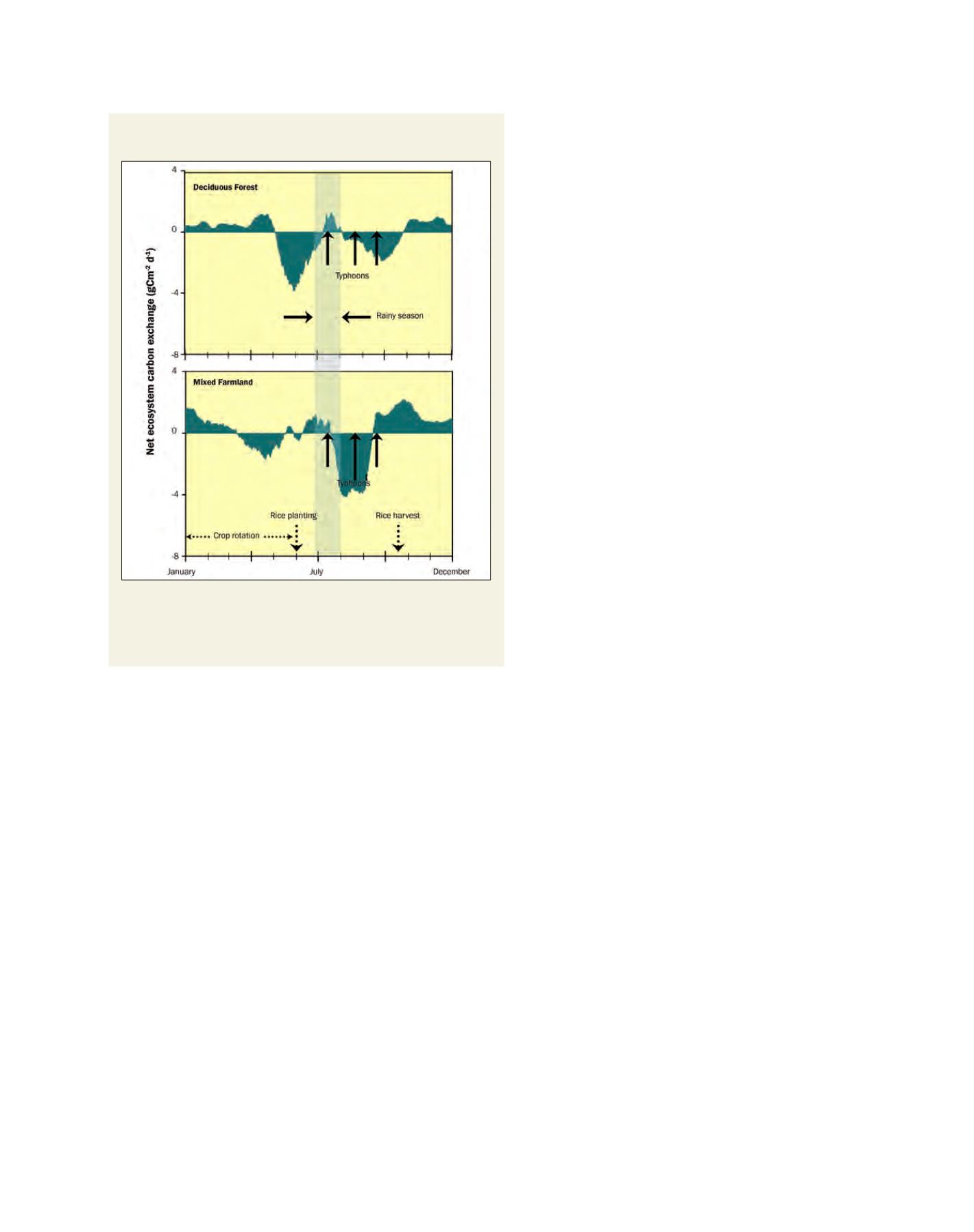

[
] 168
O
bserving
, P
redicting
and
P
rOjecting
c
limate
c
OnditiOns
Embracing resilience thinking
The idea of resilience thinking is deceptively simple, but its applica-
tion has proven profound and there is much to learn. Walker and
Salt
9
suggest a resilient world would be characterized by:
• Diversity – promoting and sustaining all forms of diversity
(biological, landscape, social and economic)
• Ecological variability – embracing and working with ecological
variability rather than attempting to control and reduce it
• Modularity – consisting of modular components
• Acknowledging slow variables – having a policy focus on slow
controlling variables associated with thresholds
• Tight feedbacks – possessing tight feedbacks, but not too tight
• Social capital – promoting trust, well developed social networks
and leadership
• Innovation – emphasizing learning, experimentation, locally
developed rules and embracing change
• Overlap in governance – having institutions that include redundancy
• Ecosystem services – including all the unpriced ecosystem serv-
ices in development proposals and assessments.
Folke et al. proposed four principles for building resilience: learning to
live with change and uncertainty; nurturing diversity for reorganization
and renewal; combining different types of knowledge for learning; and
creating opportunity for self-organization.
9
Overall, building resilience will require dynamic interplay
between diversity and disturbance, along with recognition
of cross-scale dependencies. Resilience thinking encour-
ages scientists and practitioners to work together with the
public to produce trustworthy knowledge and judgment
that is scientifically sound and socially robust. The science,
service, and stewardship of AsiaFlux are complementary
with resilience thinking. It provides qualitative monitoring,
management, and long time series of local observation and
ecological and social memory for understanding ecosystem
change throughout the adaptive cycle.
AsiaFlux entering the agora
By 2011 AsiaFlux hopes to provide a report on the Asian
carbon and water budget and develop infrastructure for an
Asian carbon and water tracking system. Furthermore, it
aims to develop a synthesized measurement and modelling
system that keeps track of emissions and removal of CO
2
and H
2
O in Asia. Reliable knowledge can become socially
robust only if society perceives the production process to be
transparent, open and participative. This, in turn, depends
on reciprocity inwhich the public understands how climate
change science works but, equally, climate change science
understands how the public works. The AsiaFlux visionwill
guide such enhanced mutual understanding and commu-
nicate and demonstrate it by embracing resilience thinking.
AsiaFluxwill continue to create space to deal with emerg-
ing paradigms for re-thinking science processes such as
cultural boundaries and authority of climate change science,
its co-evolution with risk society, context-sensitive science,
and the challenge of nurturing diverse functional groups.
10
The latter may include: knowledge carriers and retainers;
interpreters and sense makers; networkers and facilitators;
stewards and leaders; visionaries and inspirers; innovators
and experimenters; entrepreneurs and implementers; and
followers and reinforcers.
11
Such efforts guide AsiaFlux to
enter a new community space, the agora. The agora was an
open place of assembly in ancient Greek city states, where
citizens would gather for military duty, to hold markets or
to hear statements of the ruling king or council.
This October in the beautiful city of Hokkaido in north-
ern Japan, AsiaFlux will host the 8th AsiaFlux Workshop
on ‘Integrating cross-scale ecosystemknowledge: bridges and
barriers’. The workshop consists of a regular science session
and many special sessions such as ‘CarboEastAsia’, ‘Global
biogeochemical cycles’, ‘Bridges between ecosystem obser-
vation and remote sensing’, ‘Barriers in flux measurements’,
and ‘Interfaces between carbon science and society’. These
sessions consist of a diversity of individuals, workgroups,
institutions, and organizations with different but overlap-
ping roles within and between critical functional groups,
thereby building resilience. The workshop will not only
bring students, scientists, technologists, capitalists, entrepre-
neurs, diplomats, and policy-makers together, but also help
us cross cultural, disciplinary, geographic, and hierarchical
boundaries. Thus, we invite all to our new community space
in which science meets and interacts with others and where
interests, values, anddecisions are discussed, fought over, and
perhaps settled. Welcome to the AsiaFlux agora.
Net ecosystem carbon exchange (NEE) in a deciduous forest and a
mixed farmland in Korea
Positive NEE indicates carbon release and negative NEE indicates carbon
uptake. Terrestrial ecosystems are strong sinks of atmospheric CO
2
. Climatic
disturbances such as monsoon, typhoons and management practices can,
however, dramatically change the ecosystem processes and feedbacks
Source: KoFlux
(www.koflux.org)
















